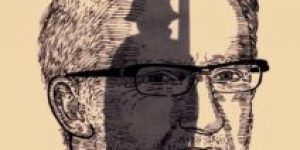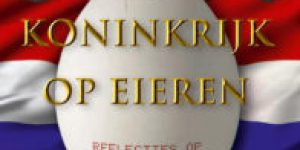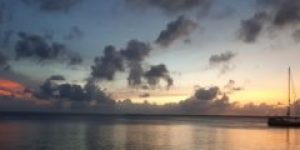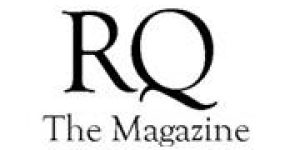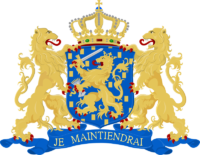The Kingdom Of The Netherlands In The Caribbean: 1954-2004. What Next?
No comments yet– Preface (see below)
– Ernst M.H. Hirsch Ballin ~ Introduction
– Lammert de Jong ~ Repairing a not so united Kingdom. Can it be done?
– Denicio Brison ~ The Kingdom’s Charter (Het Statuut): Fifty years in the wilderness
– Francio Guadeloupe ~ The Politics of Autochthony and Economic Globalization: seamy sides of the same coin
– Denicio Brison – In reaction to Francio Guadeloupe
– Francio Guadeloupe ~ The need for a critical imagination. In reaction to comments by Denicio Brison
– Mito Croes ~ De ‘reinvention’ van het Koninkrijk
– Douwe Boersema ~ 50 jaar Statuut en verder
– Steven Hillebrink ~ Constitutional In-Betweenity: Reforming the Kingdom of the Netherlands in the Caribbean
– Dirk Kruijt & Wim Hoogbergen ~ Suriname 1954-2004. Kroniek van een illusie
– About the authors
Preface
This book contains a selection of treatises on the Kingdom of the Netherlands in the Caribbean, 1954-2004. The Netherlands Antilles and Aruba are part of the Kingdom of the Netherlands. The constitution of the Kingdom, Het Statuut (the Kingdom Charter), was formalized in 1954.
In anticipation of the 50th anniversary of the Charter for the Kingdom on 15th December 2004, a conference, workshops and a series of lectures were held in the Netherlands Antilles. On Sint Maarten, the Island government initiated a conference (22 October 2004), which also included representatives of neighboring islands (St. Kitts and Nevis, Anguilla, French St. Martin), to be followed, the next day, by workshops organized by the University of St. Martin. On Curaçao, the University of the Netherlands Antilles arranged a series of lectures for the general public in November and December 2005.
Most of the book is in English, part is in Dutch. This is a reflection of the language practice in the Kingdom of the Netherlands. On Sint Maarten the lingua franca is English. On Curaçao, a Dutch speaking national may lecture in Dutch, though a presentation in Papiamento would certainly add to the speaker’s standing. Notwithstanding, all lectures on Curaçao were in Dutch. The chapter on Suriname has been included in order to present a more complete picture of the Charter’s 50 years history.
The authors present a medley of interests in the Kingdom of the Netherlands: young scholars, seasoned academics, a former Aruban minister-plenipotentiary in the Netherlands and a former Dutch resident- representative in the Netherlands Antilles. The book’s Introduction is by Ernst M.H. Hirsch Ballin, a former minister of Kingdom Affairs and presently a member of the Council of State of the Kingdom. For many years he has maintained a deep-rooted and well documented interest in the Kingdom of the Netherlands in the Caribbean.
The book’s cover shows a picture of a statue of a black Caribbean woman wrapped in the colors of the Kingdom of the Netherlands.[i] We had some doubts about this choice of cover. Could it be labeled as frivolous, irreverent or missing the point? One of the authors convinced us that this statue reflects:
(…) that the Kingdom has been multi-ethnic for centuries; that people of all color have been part of Orange; and that this awareness is growing. This statue is gender sensitive by indicating the role women in colonial dress and head wrap have played in critically translating the Netherlands dominance so that Antilleans and Arubans while being victimized, did not see themselves as victims of history.
The statue symbolizes a new concept of the Kingdom of the Netherlands, and at the same time it explicates that since colonial times the borders of the Kingdom extend far beyond the North Sea. (Francio Guadeloupe)
With vigor and pleasure we have put this book together. Most of us knew each other in cyberspace only; some met for the first time in ‘hard copy’ on Curaçao and Sint Maarten. Very likely new bonds of scholarship have been fastened for the days to come. This book would not have seen the light without the 50-year Charter initiatives of the Island government of Sint Maarten (Sarah Wescot-Williams, Dennis Pantophlet, Dorothy Lake), the University of St. Martin (Josianna Fleming-Artsen, Maria van Enckevort) and the University of the Netherlands Antilles (Miguel Goede and Douwe Boersema). We and our readers owe them much appreciation. Only insiders know how hard it was to find the money to realize these initiatives. Auke van der Berg, Rozenberg Publishers, agreed to run the press again by stating: the future of the Kingdom is our niche.” So be it.
Lammert de Jong
Amsterdam, April 2005
NOOT
i. This statue was a complimentary present to friendly relations of a political party (C 93) on Curaçao that aimed to integrate the Netherlands Antilles as part of the Netherlands. Many years ago I had to honor to be invited on a Sunday morning on Curaçao to speak about various options of Kingdom relations and have since treasured this statue on one of the Caribbean bookshelves in my study. This party did not achieve this goal and the gist of this book does not deal with this option.
Rozenberg Publishers ~ ISBN 978 90 5170 195 1 – 2005
You May Also Like
Comments
Leave a Reply




